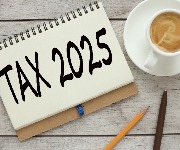Why Savings Vary In Energy Comparison

Find out why gas and electricity comparison sites sometimes produce different results.
When you enter the same information into two different gas and electricity comparison sites, you sometimes get different results. Clearly it would be to all our benefit if some clarity and consistency was introduced.
To our rescue comes independent gas and electricity watchdog Energywatch. It wants all comparison engines to work in the same way, so that they aren't confusing or misleading. To that end, it is introducing a Confidence Code. Here's a summary of the Code's nine requirements:
- The comparison site must be independent of any gas or electricity supplier.
- The comparison site must include price comparisons for all currently available tariffs for all suppliers. Comparisons should be on a like-for-like basis.
- The comparison site must use its own tariff database and calculator.
- Payment methods must include cash, cheque, direct debit and prepayment meters.
- Prices from no less than five of the cheapest suppliers must be listed, including VAT.
- Customers should be invited to consider quality of service issues and energy-efficiency programmes.
- Prices and price comparisons must be accurate and state when they were last updated.
- The comparison site must comply with an annual audit undertaken by an auditor appointed by Energywatch.
- The comparison site must have effective consumer-complaint and enquiry-handling procedures.
Until the Code is live, each comparison site is open to choose its own path and mostly they do a fair job for the consumer. Even so, we still see not only different projected savings, but even worse we see that comparison sites don't all have the same provider or tariff at the top of their table.
One reason for the sometimes widely differing results is a discrepancy under the full text of requirement seven of the Code. Energywatch wants providers to exclude one-off discounts from the results, but a number of comparison sites still choose to include them at present. This means that their prices appear £30 to £50 cheaper, despite the tariffs being identical.
When you run your own search, it makes more sense to look at the basic quote and then consider whether one-off discounts will apply to you. You can do this in The Fool's search by clicking on the tariff name after you've run a search.
So standardisation seems the way forward to avoid confusion and to limit the opportunity for manipulation. Until the Code goes live comparison sites will continue to go their individual ways.
> Compare gas and electricity quotes via the Fool.
Most Recent
Comments
Be the first to comment
Do you want to comment on this article? You need to be signed in for this feature








